by Winston Rods | Aug 8, 2021
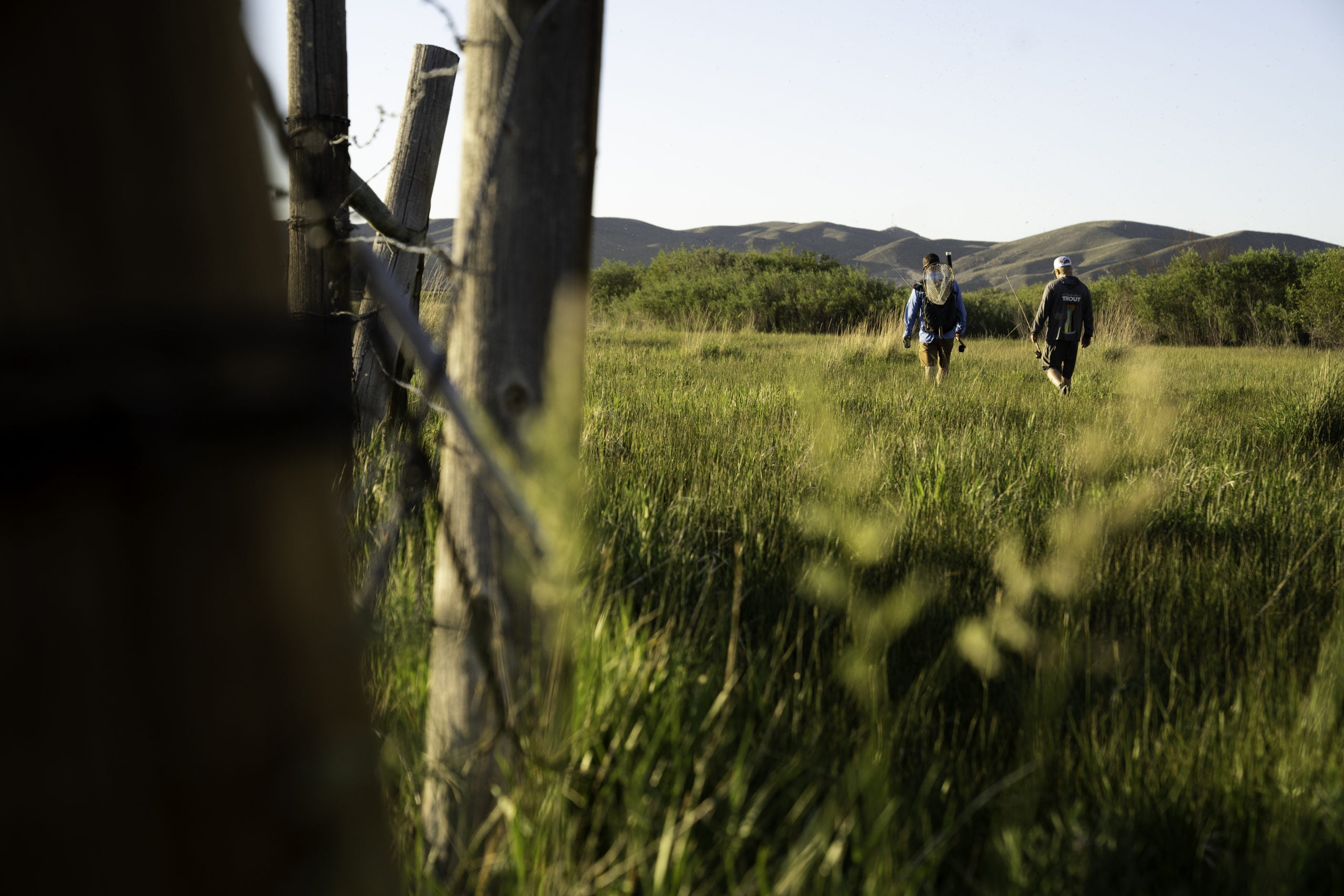
Bamboo fly rods are incredible fishing tools. They are strong, versatile, can fish heavier flies, present delicate dry flies, and fish double nymph rigs. We can even build rods in heavier line weights for use in tropical saltwater applications.
When compared to modern graphite rods, the biggest difference with bamboo is the requirement that an angler decelerate their casting stroke to appropriately match a bamboo’s slower action. Bamboo is typically much slower in its recovery speed as compared to modern fast-action rods. Anglers familiar with fishing with bamboo rods will tell you that the rod shows a reserve of power and control through the casting stroke. Yes, the rod may feel slower than today’s fast action graphite rods, but the bamboo rod finishes the cast within its own energy.
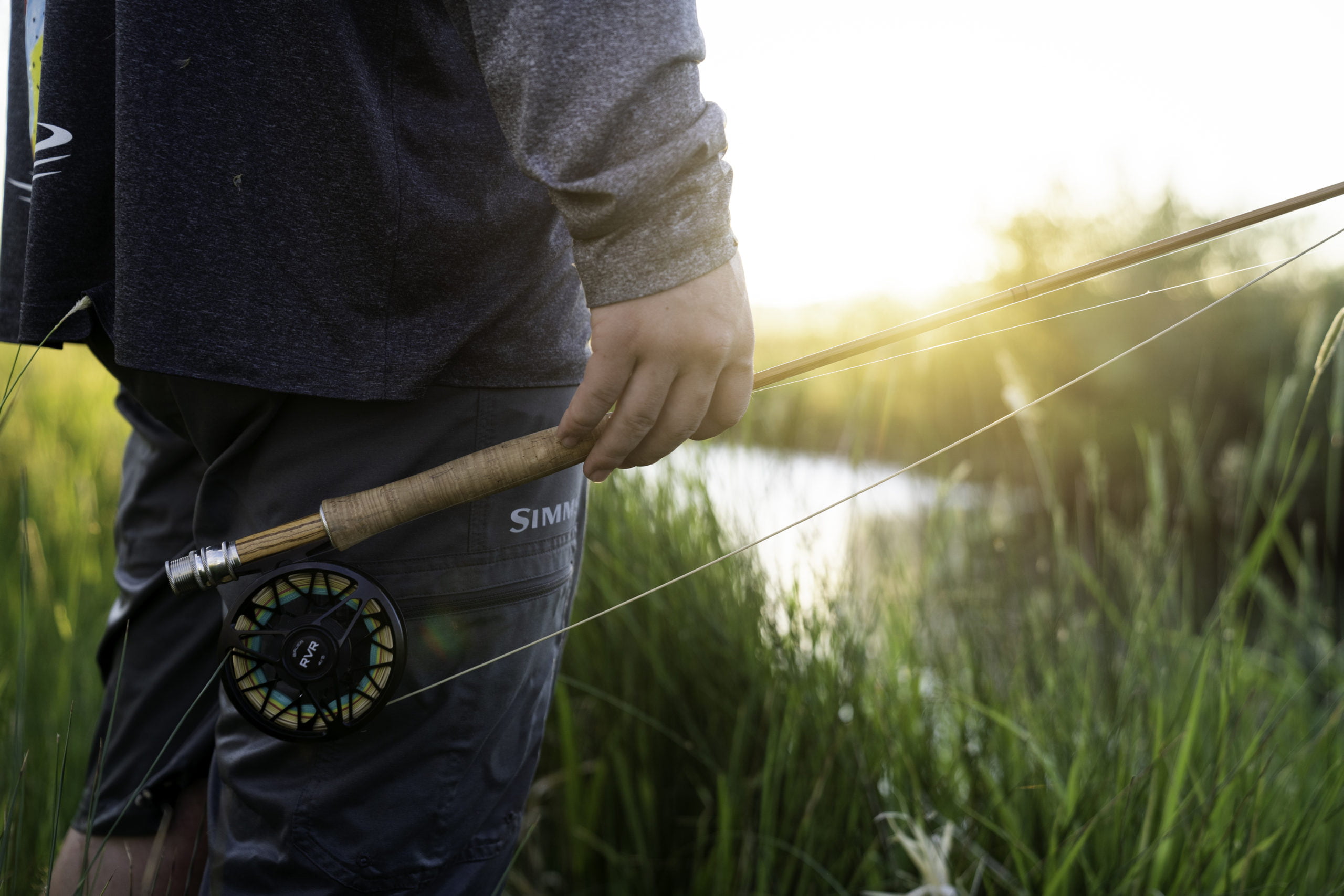
You may feel that it takes more finesse to get your timing right and it may take a few minutes to feel the rhythm of the cane rod but they are certainly capable of shooting line as far as you can cast it. There is no better feeling than shooting an entire fly line out of the tip of a bamboo rod. However, these rods are tools for fishing, designed to present a fly accurately to the target.
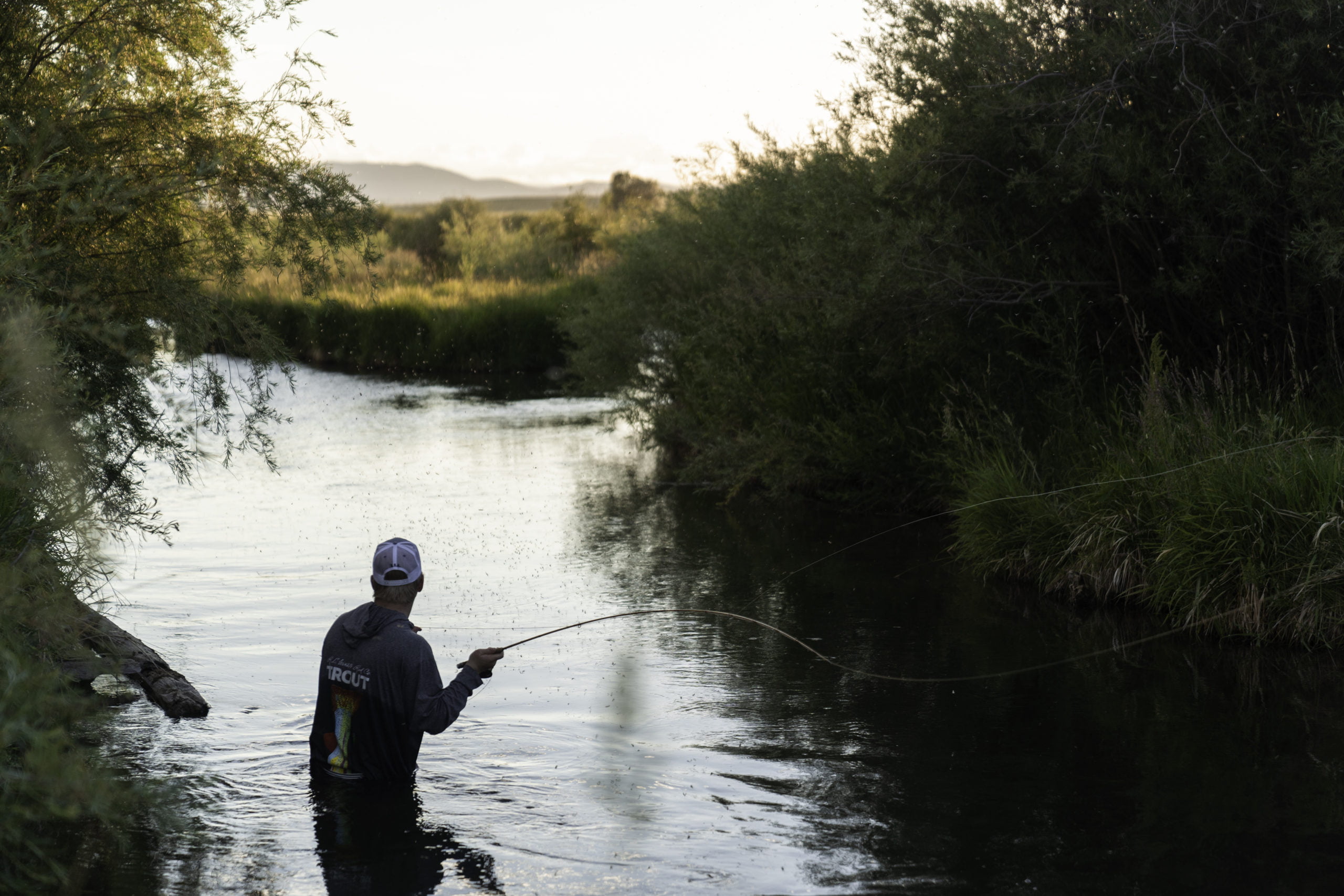
Bamboo offers a few benefits beyond the quality of experience. The most important quality, especially in trout country, is the ability to protect light tippets. Our trout sized bamboo rods can easily foster the use of 6X, 7X, or even 8X tippet. The rod’s progressive flex protects small flies and light tippet while fighting big fish. Additionally, the feeling of fighting fish is much more enjoyable with a deep-flexing rod as you can feel that fish all the way to the butt section.Bamboo rods also display great durability, and if well built, are very strong. Due to the nature of the natural materials, the compression strength is impressive, allowing for a heavier load on the material than in many graphite rods.

We encourage anyone who stops in our showroom in Twin Bridges, Montana to take some time and cast a bamboo rod. What you’ll find is a rod that responds at the flick of your wrist and gracefully loads between your forward and back cast. While the tip feels a bit heavy compared to our modern graphite tapers, it feels alive in hand, reacting to even the smallest of mends and flicks.
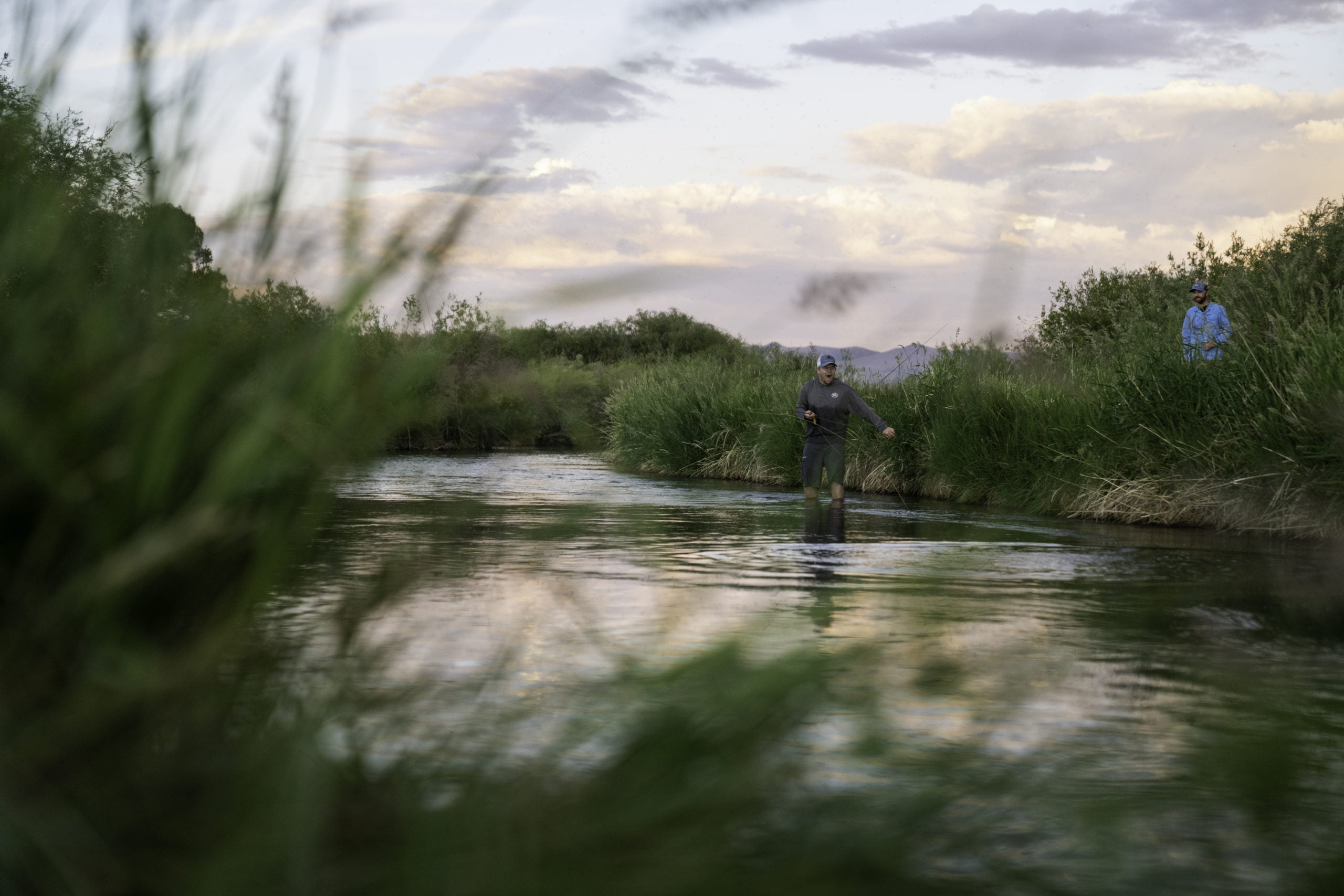
Put a Winston bamboo rod in your hands and you are picking up over 92 years of tradition and innovation. Cast one and you will experience a wonderful action with delicate line and loop control. Fish one and you will understand why anglers become devotees of bamboo and a part of the ultimate fly fishing tradition and experience.
To order your very own Winston bamboo rod, please contact us. We’d be happy to walk you through the details and timeframes for delivery.
For more information on Winston Bamboo, please give us a call at 406-684-5674.
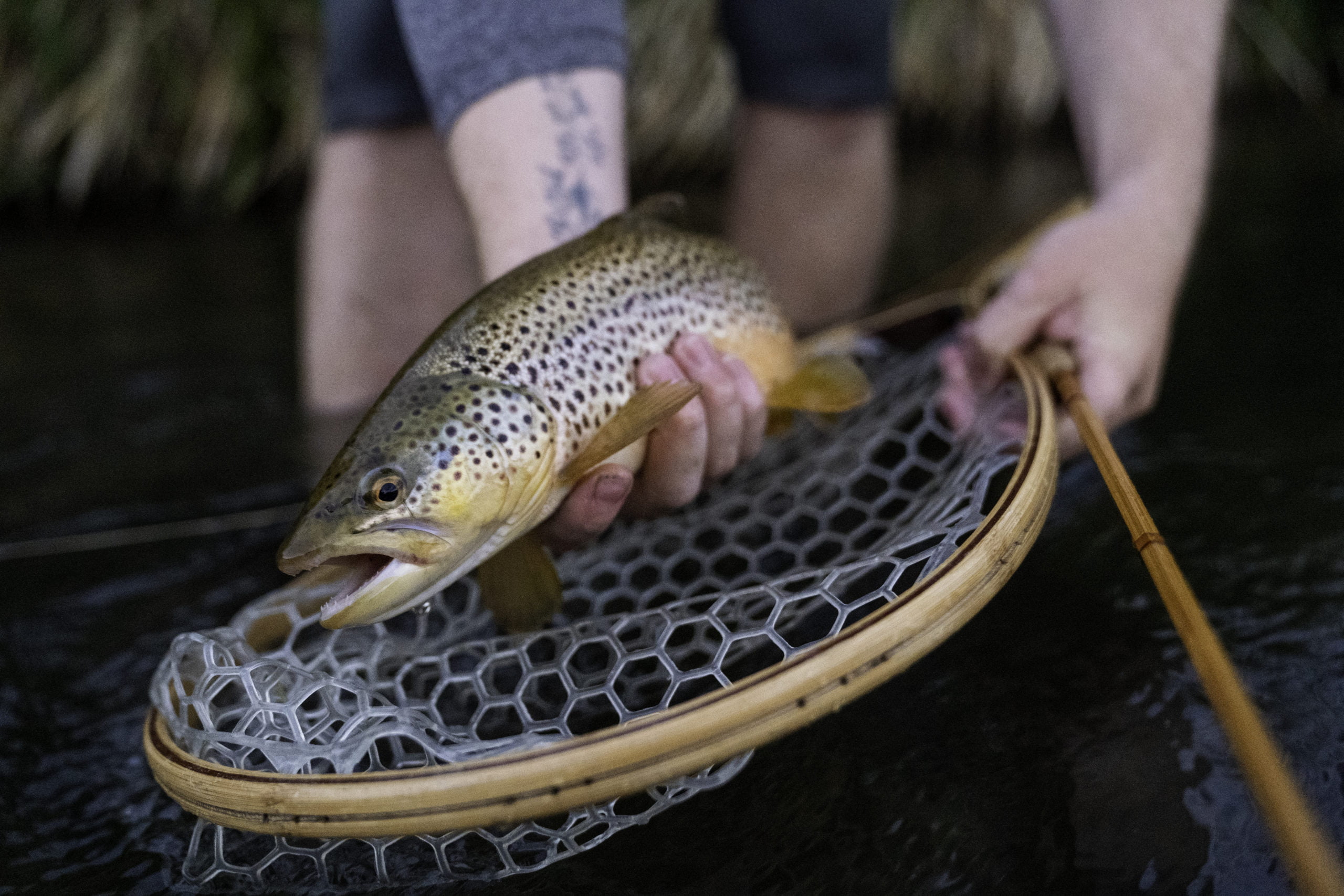
by Winston Rods | Aug 6, 2021
Our bamboo shop in Twin Bridges, MT is a modest place, but rich in tradition. Walking through the front door, one is greeted by a deep sense of history and a familiar hum of a workshop. We’re currently working on orders coming in from all over the world — from Hungary to New Zealand. One will notice quickly that bamboo is not dead.
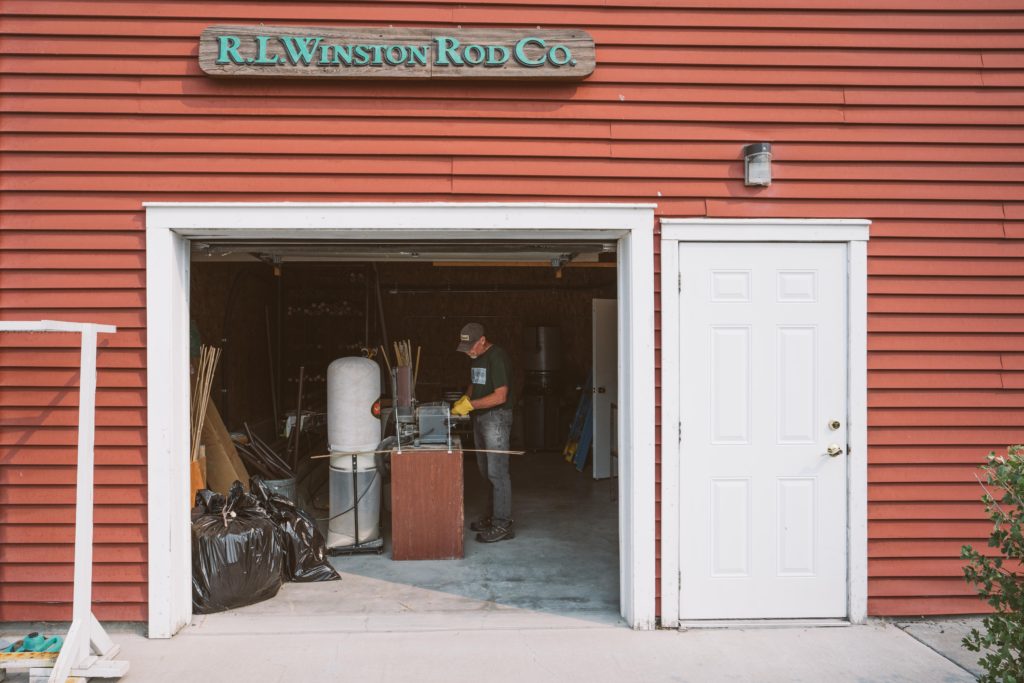
The building process starts at sourcing and selection of the finest cane available. Bamboo, also, known as Arundinaria amabilis or “The Lovely Reed”, is a grass and not a type of wood. Our cane stocks come in 11 foot sections, sourced from the Sui River region in China.
As illustrated below, the bamboo culms are sorted based on node spacing. A node is a growth ring (solid joint). These growth rings occur at various lengths along the culm. Each culm of bamboo is unique. This is a large part of the reason why building bamboo rods is such an extensive process.
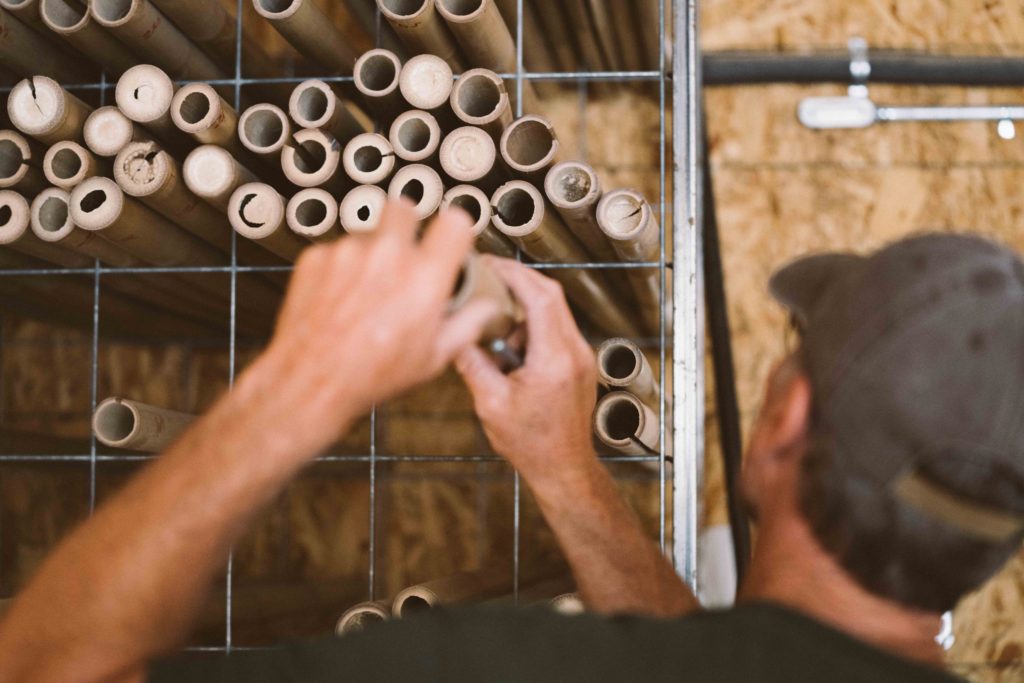 Unlike graphite, bamboo is not standardized in its density of power fibers. The grain, node spacing, wall thickness, and fiber density are unique to each culm, which is why they must be individually tailored to fit the specifications of the various rods and their individual sections.
Unlike graphite, bamboo is not standardized in its density of power fibers. The grain, node spacing, wall thickness, and fiber density are unique to each culm, which is why they must be individually tailored to fit the specifications of the various rods and their individual sections.
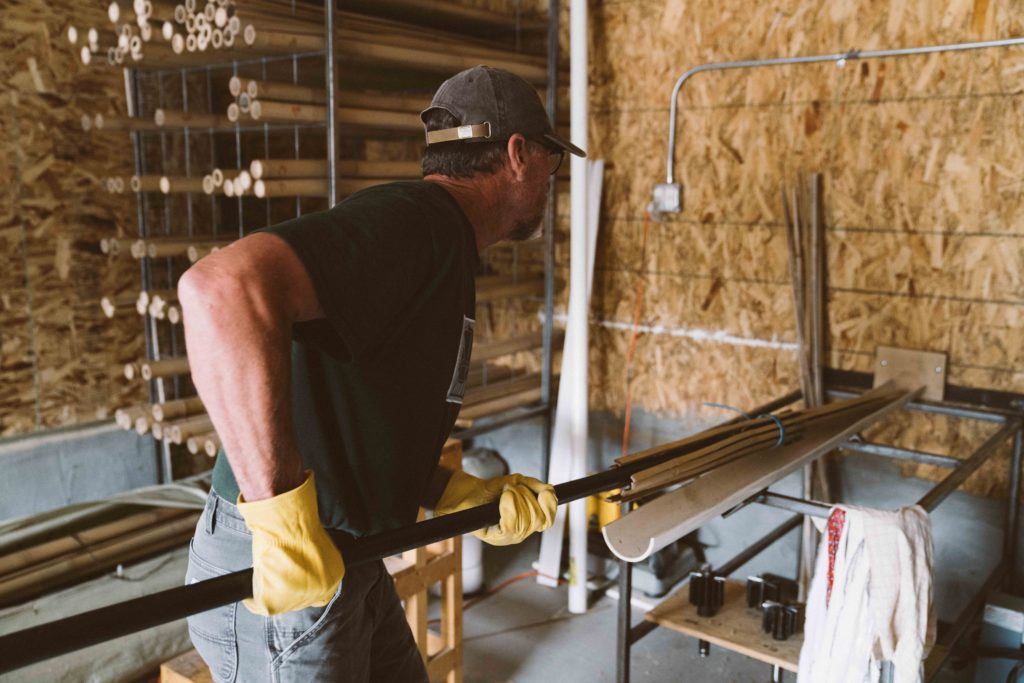
After the culms are cut to 5’ lengths, they are split into strips using a specialized splitting tool, as the photo below demonstrates. We will take these strips and begin the work of building a Winston bamboo fly rod. These split strips will make their first of many passes through the milling machine to be cleaned up. After milling, the strips are then heat cured to set the natural resins in the cane and impart a warm honey-colored look.
Once cured, the strips begin a long process of milling each one to its finished dimension. We then take six perfect strips, assemble them with alternating node spacing and prepare the assembled strips for gluing that cures for a minimum of 10 days.
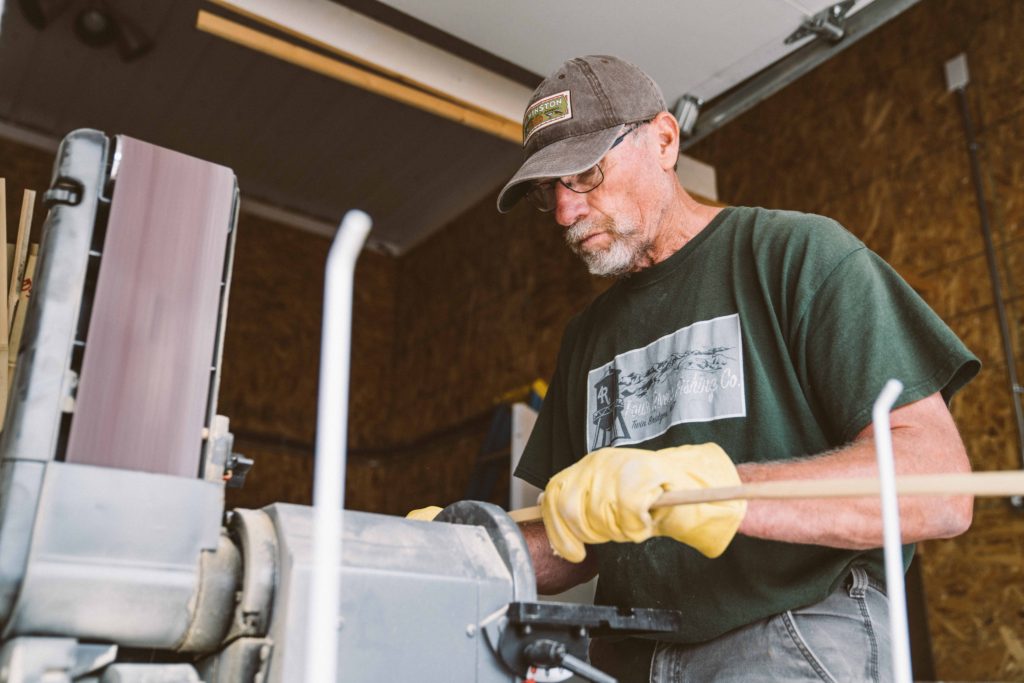
Once the glued strips are cured, we remove the cross wraps, sand off the enamel and sand to finish, ensuring that the Winston tapers are held. If our measurements are incorrect, we will scrap and restart. Good enough is not acceptable here at Winston.
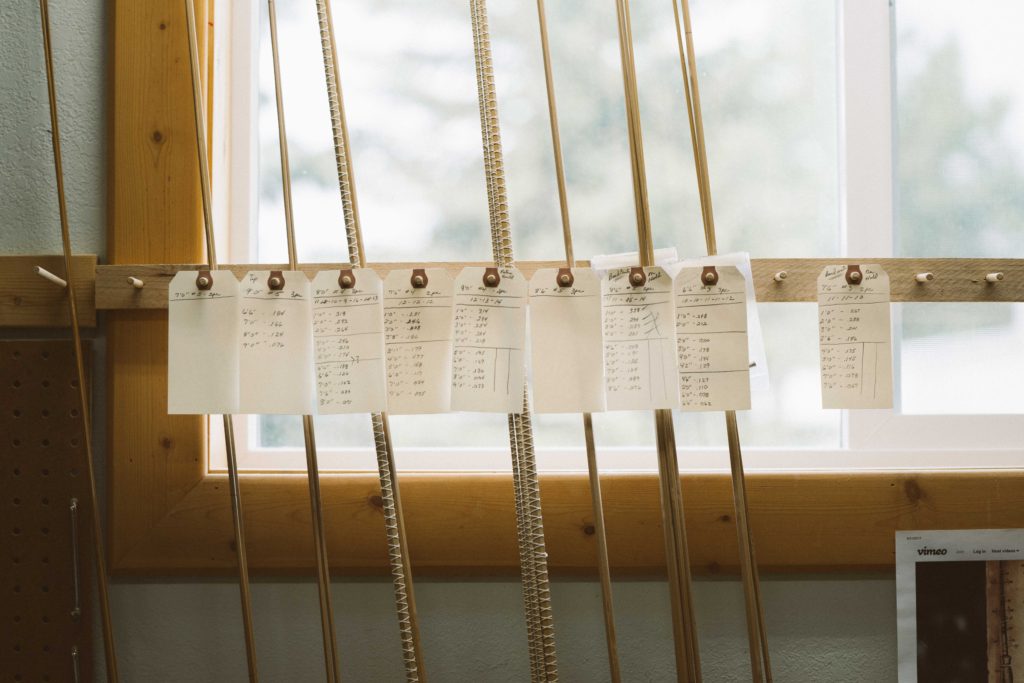
After the parts are milled and sanded, it’s time for the aesthetic finishes. The finished sections are fitted with ferrules. We then set our tip top, guides, and grip.

Each rod is hand inscribed with the rod model, length and line weight. And, if there are any custom requests to do so, we can inscribe a name or short phrase on the rod. Finally, the rod is cleaned and prepped for a final varnish which seals the cane in a UV protective, beautiful gloss finish. After applying the final varnish, we allow the rod to hang for two weeks to allow for complete cure and drying.
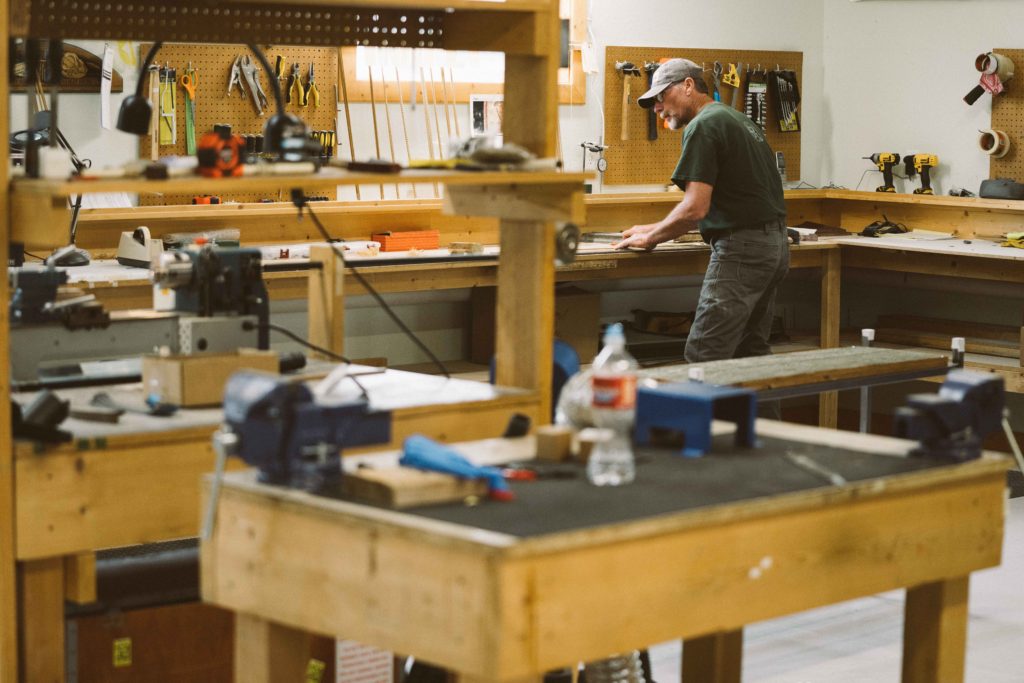
Each completed Winston Bamboo rod comes with two matching tips, German silver uplocking hardware on an elegant wood reel seat, a Winston logo embroidered rod bag, and a powder coated aluminum rod tube. The finished product is a handcrafted, truly unique rod and a beautiful tool for fly fishing. A fine work of art and the result speaks for itself.
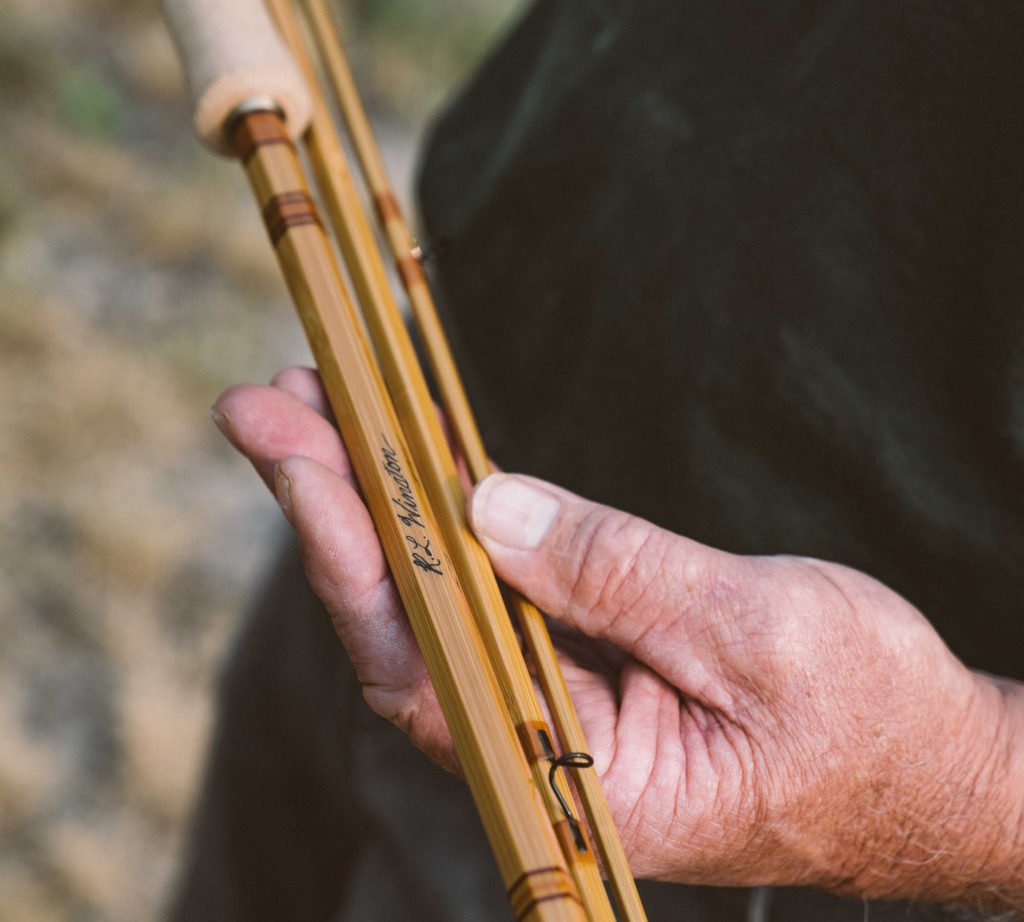








 Unlike graphite, bamboo is not standardized in its density of power fibers. The grain, node spacing, wall thickness, and fiber density are unique to each culm, which is why they must be individually tailored to fit the specifications of the various rods and their individual sections.
Unlike graphite, bamboo is not standardized in its density of power fibers. The grain, node spacing, wall thickness, and fiber density are unique to each culm, which is why they must be individually tailored to fit the specifications of the various rods and their individual sections.





